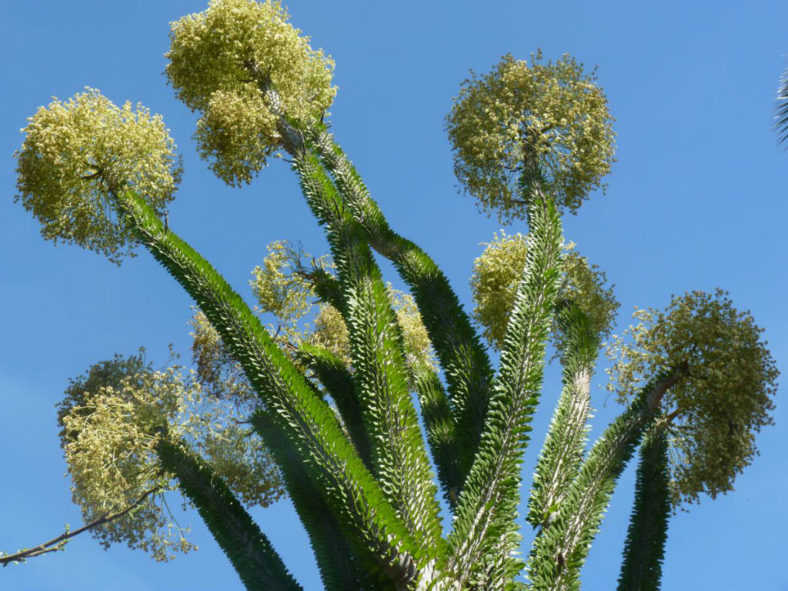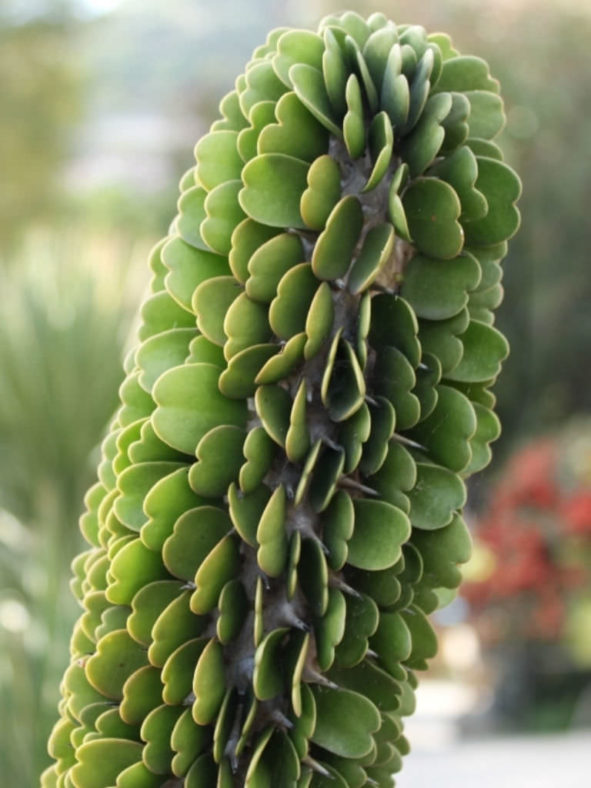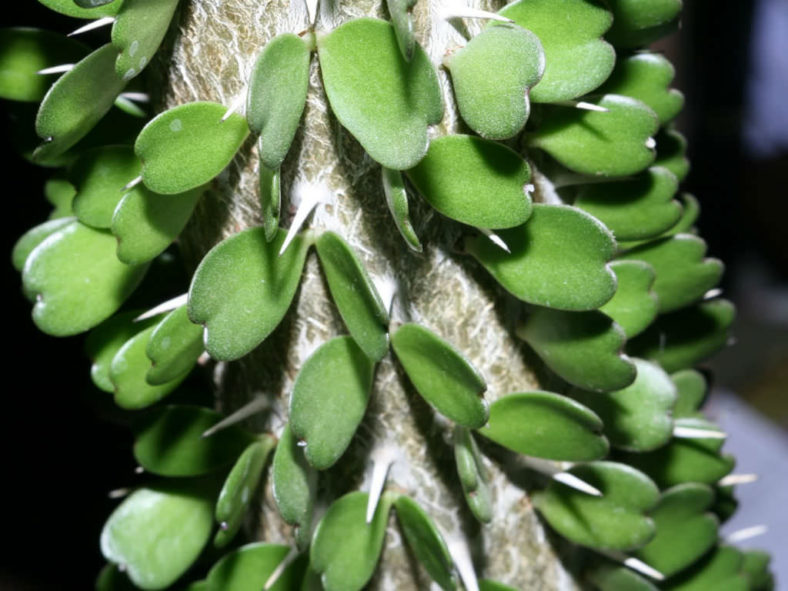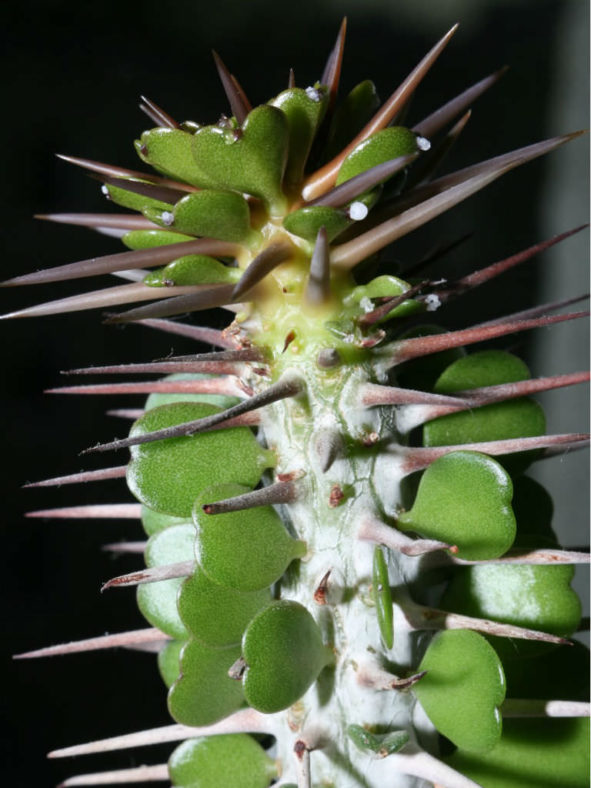Scientific Name
Alluaudia ascendens (Drake) Drake
Common Name(s)
Fantsiolotse (local name)
Synonym(s)
Didierea ascendens
Scientific Classification
Family: Didiereaceae
Subfamily: Didiereoideae
Genus: Alluaudia
Etymology
The specific epithet "ascendens" (pronounced "as-SEN-dens") means "ascending, rising" and refers to this species' growth habit, which tends to create a massive, ascending, V-shaped crown over time.
Origin
Alluaudia ascendens is endemic to Madagascar.
Description
Alluaudia ascendens is a spiny succulent tree that grows as a single stem before weakly branching from a height of 3.3 to 6.6 feet (2 to 4 m), ultimately forming a massive, ascending, V-shaped crown. It grows up to 40 feet (12 m) tall, making it the largest member of the Didiereaceae family. Its branches are few and almost vertical. The leaves are thick, fleshy, green or reddish in full sun, measuring up to 1 inch (2.5 cm) long.
The flowers, which are white to dull reddish, appear in clusters at the top of the branches in the fall.

Hardiness
USDA hardiness zones 10a to 11b: from 25°F (-3.9°C) to 50°F (10°C).
How to Grow and Care
Alluaudias need full sun or high interior lighting, a well-drained soil mix, and freely circulating air. The best way to water these succulents is to soak the soil and let it dry out before watering it again. If fertilizer is used, it should be diluted to 1/4 the recommended rate on the label.
These plants must be protected in the greenhouse over the winter. Established Alluaudias should tolerate temperatures around 32°F (0°C). The plants will drop all their leaves during the winter months, and no water should be given.
However, if planted in the landscape, it will often drop all its leaves when it decides to take a rest. When this happens, cut down on the watering until the leaves appear again.
Alluaudias are propagated from cuttings taken in the spring or from seed when available.
Learn more at How to Grow and Care for Alluaudia.
Links
- Back to genus Alluaudia
- Succupedia: Browse succulents by Scientific Name, Common Name, Genus, Family, USDA Hardiness Zone, Origin, or cacti by Genus
Photo Gallery
Click on a photo to see a larger version.


